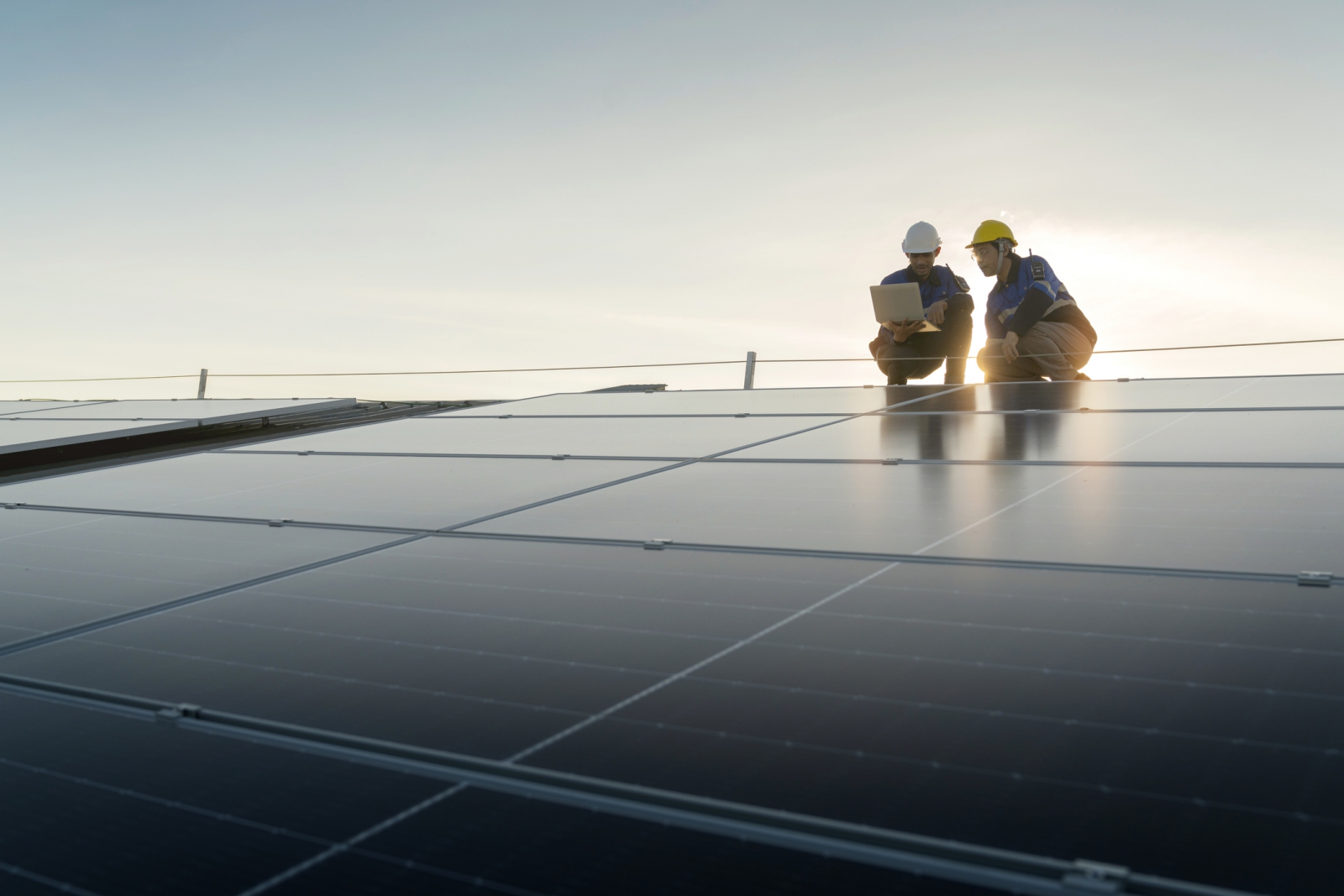
Engineers team survey check solar panel roof in Thailand. (Photo: iStock)
Thailand's new power development plan (PDP), which went through a week-long public hearing, outlines the country's electricity management strategy to the end of 2037. The latest revision raises the renewable energy generation target from the previous 36% to 51%. However, some renewable energy industry stakeholders believe that the country should set even more ambitious goals. Nuclear energy, particularly small modular reactors (SMRs), has also been a topic of significant debate. Despite the plan still being in development, some energy companies are already taking proactive steps.
Thailand has committed to achieving carbon neutrality by 2050 and net zero emissions by 2065. The new power plan focuses on expanding the use of renewable energy, efficiently managing power supply, and incorporating nuclear energy.
In terms of energy mix, Thailand aims to significantly increase renewable energy from 20% of total power generation in 2023 to 51% by the end of 2037. Natural gas usage will be reduced from 57% to 41%, and coal-fired power will decrease from 20% to 7%. The remaining 1% will be allocated to nuclear and other new energy sources.
Some energy industry experts’ express concerns that the 48% share of fossil fuels, including natural gas and coal, may hinder country’s overall carbon emission reduction. Tanachai Bunditvorapoom, CEO of Absolute Clean Energy, told the Bangkok Post that while Thailand aims for the energy sector to cut carbon emissions, other industries’ targets remain unclear. He believes the power plan’s carbon reduction goals should be more ambitious.
Tanachai pointed out that the first phase of the 5.2 GW renewable energy plan launched by the Energy Regulatory Commission (ERC) in 2023 saw positive results. Even the second phase in 2024 adding a capacity of 3.6 GW, there are still insufficient to help Thailand meet its 2050 targets.
Natee Sithiprasasana, Chairman of the Renewable Energy Industry Club at the Federation of Thai Industries (FTI), highlighted solar, biomass, and biogas as key renewable energies the government should heavily promote. Thailand already has the necessary equipment and raw materials, and the development costs for solar energy systems, including storage, have significantly decreased. He noted that local photovoltaic prices are now lower than natural gas generation, at 2.8 THB per kilowatt-hour (about 0.027 USD).

The hydro-floating solar hybrid project at Sirindhorn Dam in Thailand. (Photo: EGAT)
Regarding nuclear energy, the Thai government is considering small modular reactors (SMRs), which have a maximum capacity of only 300 MW. These reactors are seen as a potential solution for rural areas due to their lower generation costs and ease of installation and transportation. Sarat Prakobchart, Deputy Director of the Energy Policy and Planning Office (EPPO), mentioned that feasibility studies are planned for Northeast and Southern Thailand in 2024.
The new power plan indicates that SMR development should occur between 2036 and 2037. However, nuclear power plants remain controversial, especially after the 2011 Fukushima disaster, which halted plans for a 2,000 MW nuclear plant. The renewed focus on nuclear energy has attracted significant attention.
Despite the need for additional public hearings on nuclear plant development, some companies are already moving forward. Global Power Synergy Plc (GPSC), an energy company under PTT, partnered with Danish nuclear startup Seaborg Technologies in April to form a joint venture focused on SMR technology, expecting to see results within four years.
Thailand plans to introduce the 2024 National Energy Plan in September, which will include not only the power development plan but also initiatives for alternative energy development, energy efficiency, oil, and natural gas. Drafts of these plans have recently been discussed in public hearings and are expected to be implemented by the end of the year.
Source: Bangkok Post, The Nation, The Thaiger





